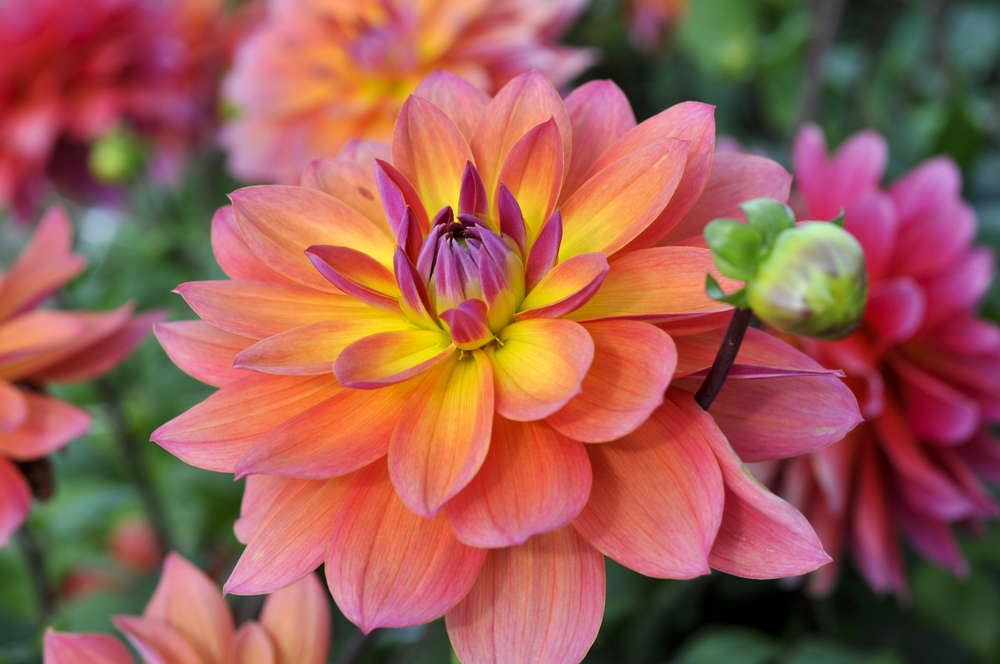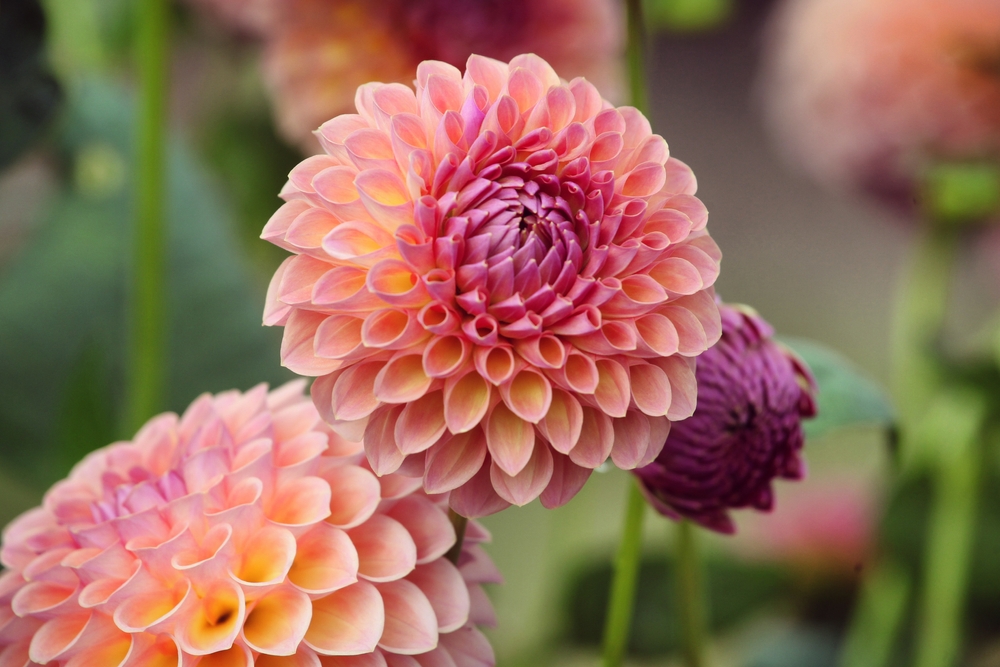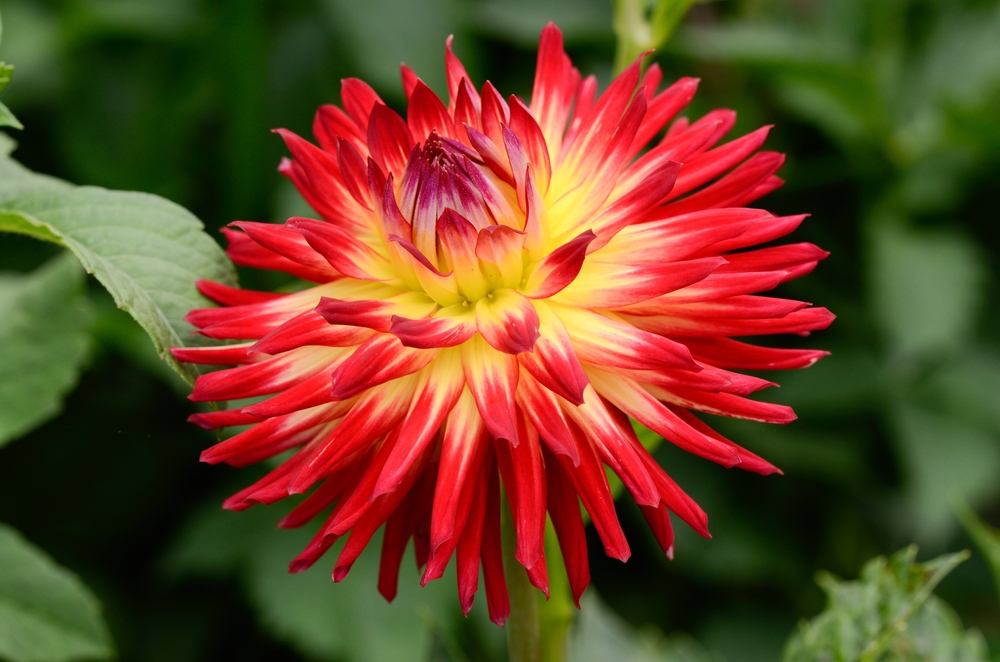Posted by Esther Roberts on 17th Jun 2021
Our Complete Guide To Planting Dahlia Tubers

Dahlias are an ever-popular choice for many a summer garden. Their easy-to-grow tubers produce phenomenal displays of colour and texture in a range of styles throughout the season. However, if you're new to gardening, you may be wondering how to plant these beauties.
Planting dahlia tubers in pots and flower beds is a straightforward process, perfect for those with less experience. With their beauty and effortless maintenance, it's easy to see why they're a horticultural favourite.
Why Choose Dahlias?
- Dahlias are easy to grow and suitable for gardeners of all skill levels. These blooms are fast-growing by nature and will flower in the first year and for many years to come (keep them stored and frost-free over the winter).
- Dahlia tubers are versatile and will tolerate most types of well-drained, fertile soil or compost. They can be grown successfully in pots, tubs, window boxes and in borders.
- They are a firm favourite due to the many different types, sizes, and colours available on the market.
- New varieties are created each year. Once you're hooked on Dahlias, you will always be able to find something new.
- They flower continuously through the summer, right up until the first frost of the autumn.
- They look fantastic as cut flowers, making any display a memorable one.
Dahlia Varieties
Image: Pompom dahlias
Before we move on to planting dahlia tubers, here are the main types of Dahlias. Each variety can be classified into several different categories, representing the main characteristics of the flower blooms themselves.
Anemone Flowering – Also known as Powder Puff Dahlias, these beauties produce unique flowers with double feathered central petals resembling a fluffy ball.
Cactus Dahlias – A favourite for many years, Cactus Dahlias produce fully double-pointed petals which turn backwards to create a tubular petal effect. Are sometimes referred to as Spiky Dahlias.
Dark Leaf Dahlias – As the name suggests, the foliage on this variety is not the usual bright green that you see on your average Dahlia. They create an abundance of flowers through the summer, with each bloom appearing on darker (usually purple/black) foliage.
Image: Cactus dahlias
Decorative Dahlias – Produces large, fully double flowers with rounded petals through the summer right up until the first frosts. A perfect choice for cut flower displays.
Dwarf Dahlias – A range of smaller, more petite Dahlias which are perfect for the front of the border. They are prolific flowering varieties, and look great planted mixed in pots on the patio.
Dinner Plate Dahlias – As the name suggests these are the largest flowers within the range, often up to as much as 25cm in diameter (see illustration below). Another popular choice is cut flowers.
Pompom Dahlias – Love the unusual? Pompom Dahlias produce ball-shaped blooms that appear throughout the summer. Each petal has rounded tips and are curved upwards at the edges - available in plenty of colours.
Planting Dahlia Tubers
All our Dahlias are supplied as top-quality dormant tubers which can be planted as soon as you receive them. The success rate of these dahlia tubers is extremely high. They are also an inexpensive way to create a large number of flowers from one plant.
Dahlia tubers should be planted 10cm deep in fertile well-drained soil, outdoors in spring when the frost has disappeared. They prefer to be in a sunny location and spaced approximately 45cm apart. In areas where there is extreme cold, dig up dahlias and store in a cool compost over the winter. Apply a high potash fertiliser every few weeks in the summer to help growth and they can be dead-headed when necessary.
Planting Dahlia Tubers in Pots & Containers
Planting Dahlia tubers in pots and containers is a fantastic way of brightening up your patios. Their unique colours and shapes will brighten any space, a perfect choice for gardens with less space to play with.
- Once your tubers arrive safely in the post, they can be soaked overnight in a bucket of water to soak up as much moisture as possible.
- When all signs of frost have passed they are ready to pot up, leaving plenty of time to grow a well-established root before the summer.
- It is recommended to place some pebbles at the bottom of the pots before adding the compost to help with drainage, by ensuring the compost doesn’t block the drainage holes.
- Fill in some compost and then add the tuber with the growing tip facing upwards.
- Continue to fill in the rest of the compost to firmly hold the tuber, making sure the growing tip at the top is peeping out and is not completely covered. This is now ready to be moved to the patio or garden area, with access to as much sun as possible.
- Water well after potting, keeping the compost moist but not waterlogged, as the tubers will rot. Add a liquid feed weekly during the growing season and provide some protection from slugs as they have a strong love for Dahlias.
- If growing tall varieties, insert a cane to help with growth and to keep secure.
- Very little pruning is needed with Dahlias. However, you can deadhead as flowers begin to fade.
More Dahlia Tutorials...
Dinner Plate Dahlias
Dwarf Gallery Dahlias
Cactus Dahlias
Bishop Dahlias
Shop our full range of Dahlias online.

